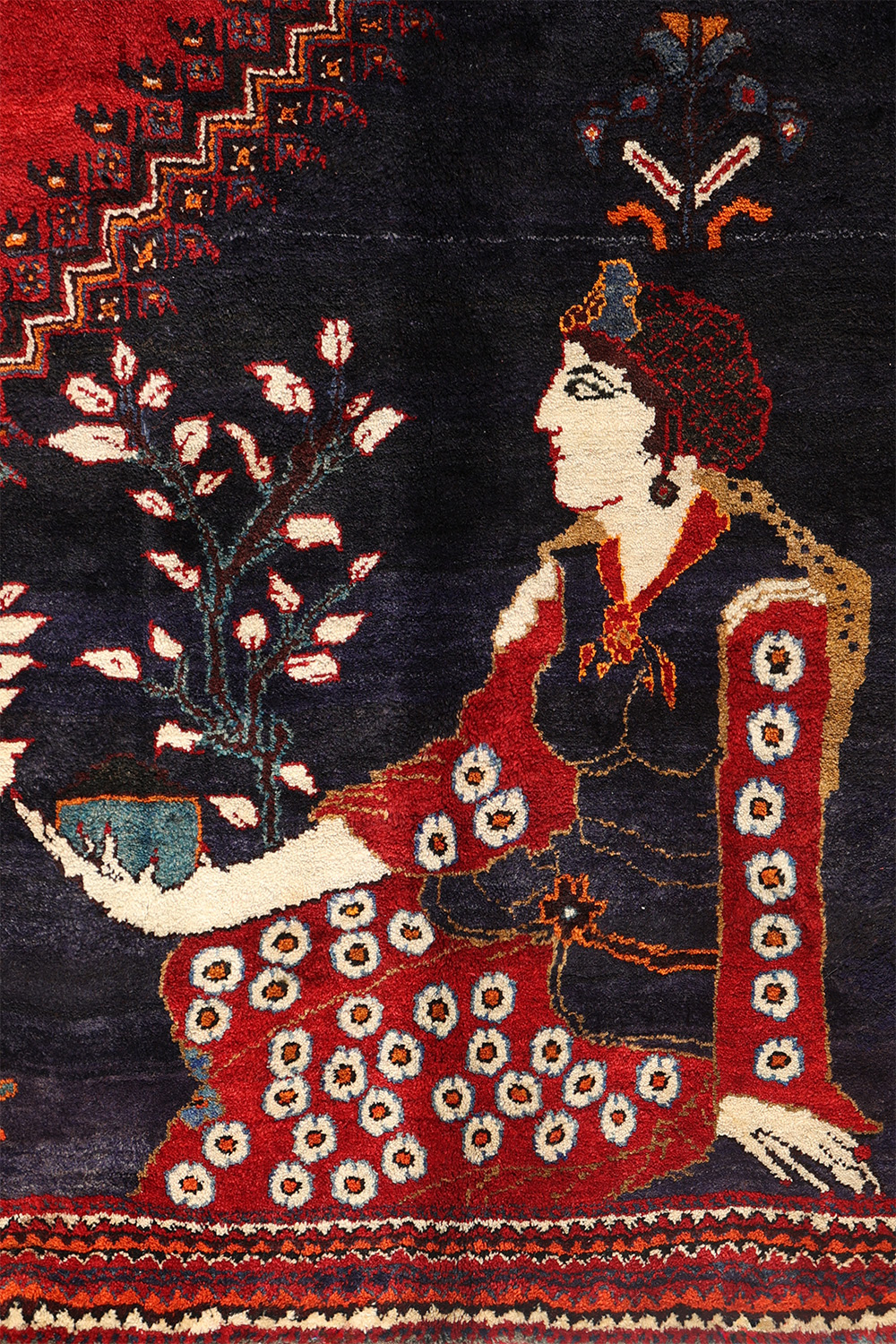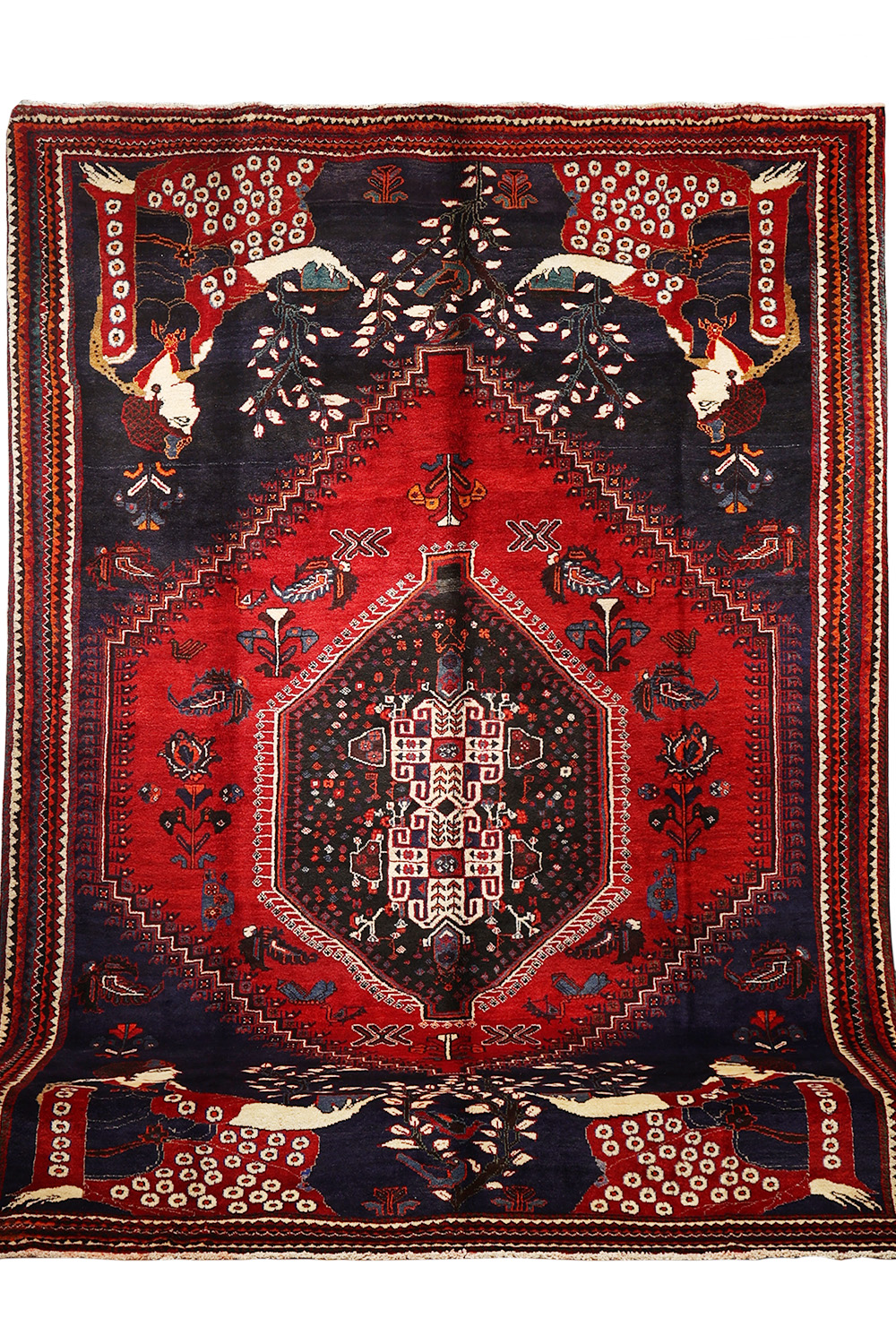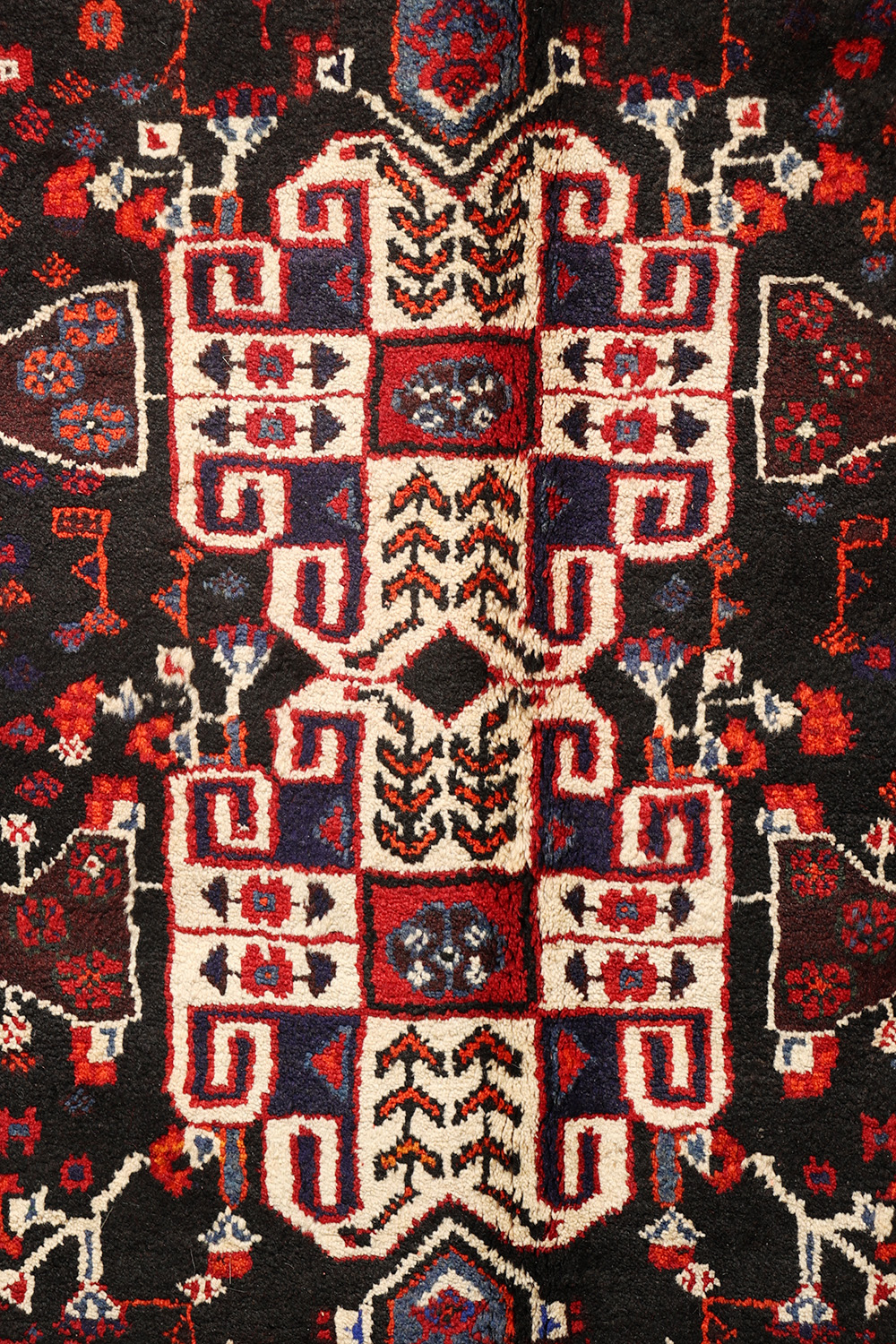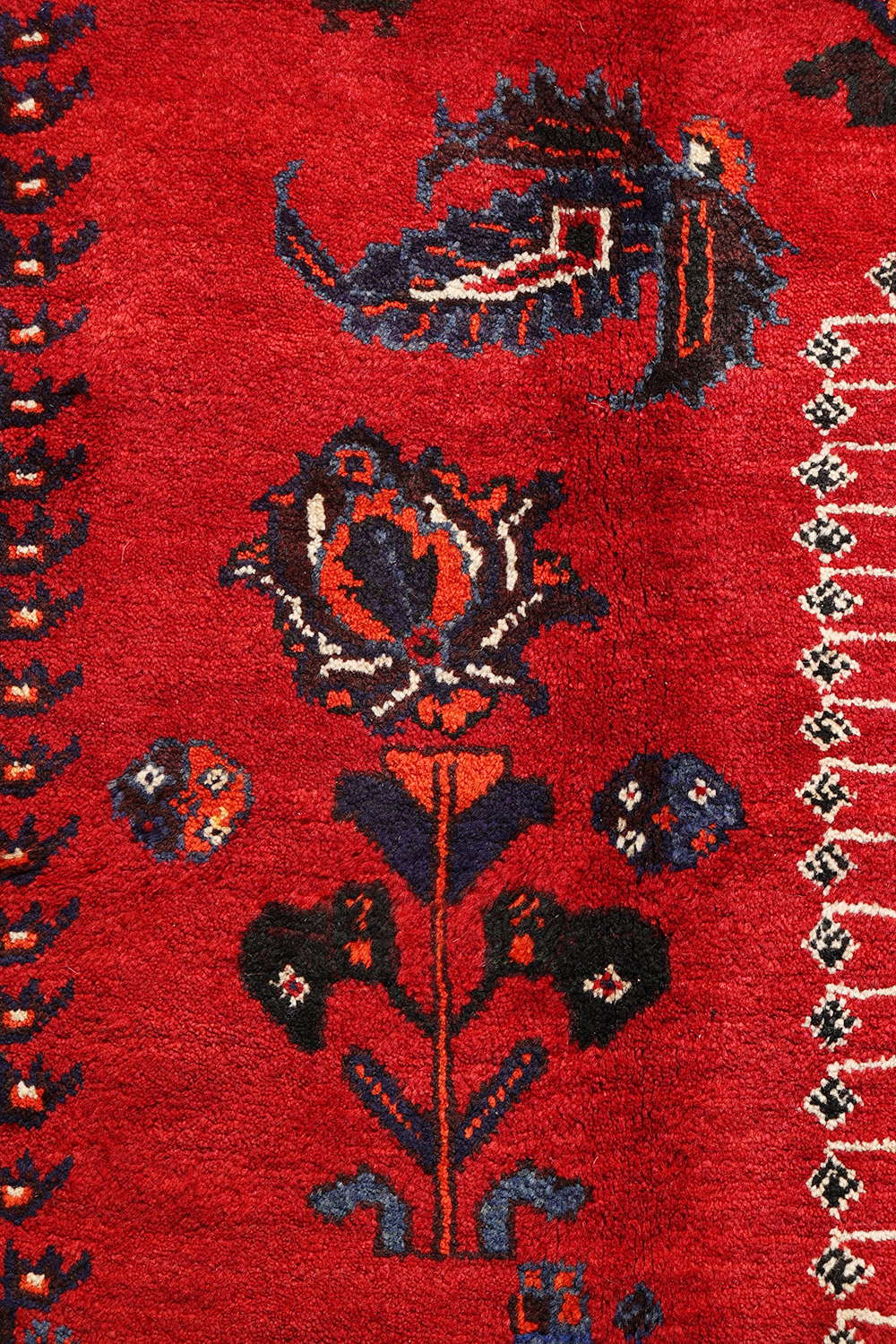Discover a truly exceptional and rare semi-antique Basseri rug from the 1950s-60s. This stunning piece features a striking central medallion, with the iconic figure of Scheherazade intricately woven into each of the four corners.
During a recent journey to a small village in southern Iran, I asked the locals to help me find an old, large tribal carpet. To my amazement, just a few hours later, they returned with three enormous rugs, all crafted around 1950 by the women of the Basseri tribe—a nomadic, pastoral community from Fars province.
While I rarely use the word “unique” to describe a rug, this one truly earns the title. The design includes several depictions of Scheherazade, the legendary storyteller from One Thousand and One Nights. The fine details in the patterns—particularly the delicately woven skirts, birds, and intricate motifs—showcase the remarkable craftsmanship of the Basseri weavers.
What sets this rug apart is not just its beauty but also the luxurious quality of the wool. The thick, plush pile and the softness of the material make this piece a true treasure.
This large rug was likely woven by settled Basseri women, who had access to a large loom capable of creating such a grand design.
All the dyes are natural.
As a final touch, I’ll leave you with a quote from One Thousand and One Nights…
“If lies can save a man once, the truth can save him twice.”
“if lies can save a man once, truth can save him twice.”
― Anonymous, The Arabian Nights: Tales of 1001 Nights, Volume 1 of 3
Material: 100% hand-spun sheep wool
Size: 377×268
Origin: Basseri tribe from Iran
Date of weaving: 1950-60
The Basseri (Persian: باسری or باصری) are a pastoral nomadic people living in Fars Province in Southwestern Iran in land characterized by widely contrasting agro-ecological zones and heterogeneous ethnic groups Their migratory area is around Shiraz. They are one of the five tribes of the larger Khamseh confederation. The Basseris are probably the most nomadic of the Khamseh tribes.
The “tent” is the basic unit of social organization among the Basseri. All tents have a recognized head that deals with the formal officers of the tribe, villagers, and other strangers. The Basseri economy stems mainly from sheep and goats.
According to Fredrik Barth who worked with them in 1958, the Basseri considered themselves a clearly distinct group, despite sharing language and cultural features with several neighboring tribal groups.
The Basseri speak a dialect of Farsi which Barth found to be “very close to the urban Persian of Shiraz town” .Some Basseri were also bilingual in Turkish, Arabic or another Farsi dialect spoken by neighboring groups. Barth also found other tribal groups outside Basseri, such as the Bugarad-Basseri of north-west Fars, who spoke the Basseri dialect and claimed a genetic connection with them (Barth, 1961: 2).
In the old times most pile rugs and weavings were used within the tribe and rarely sold. Formerly misidenfied as “Qashqai” or sold under the generic label “Shiraz”, Khamseh rugs have now adquired a reputation of their own.
1 in stock
| Weight | 48 kg |
|---|








